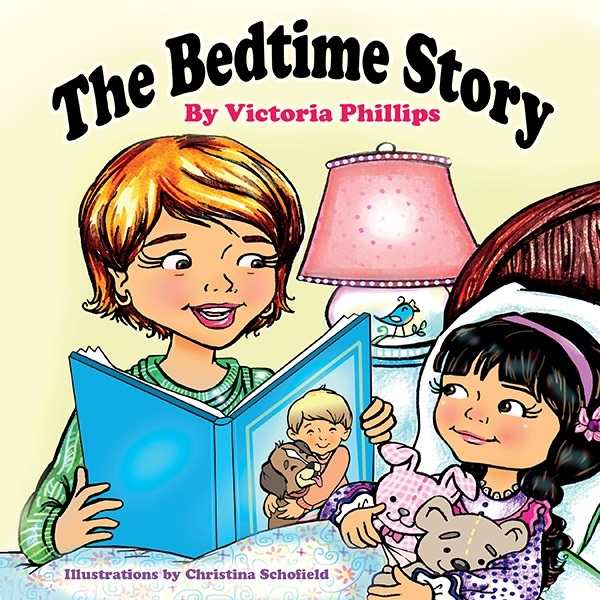
The Bedtime Story
A young girl learns about empathy and consequences when she hears a story and takes on the perspective of one of her dolls.
The Bedtime Story is a simple tale about the consequences of our choices. Victoria Phillips has taken an issue familiar to children and created a witty narrative to capture preschoolers’ attention. Tori is a four-year-old girl who loves to play but doesn’t like to pick up her toys at cleanup time. When her mom reads her a bedtime story about a little boy who neglects his toys by not putting them away properly, Tori realizes that she’s been equally neglectful.
Using a third-person, limited viewpoint, Phillips not only draws attention to main character Tori, but focuses on how a typical four-year-old child thinks. Children at this age begin to move away from an egocentric mentality—the idea that the world revolves around them—and toward understanding that their choices have consequences. In the case of Tori, she realizes that by choosing to play instead of clean up, her toys can get ruined.
Although Tori’s loving parents remind her of other responsibilities, like getting dressed before going outside to help in the garden, they back off but remain observant after gently reminding her to clean up her toys. Illustrator Christina Schofield does a great job capturing the facial expressions of Tori’s dad when Tori doesn’t clean up in the living room, and the contrast between her mom’s reaction—clearly disappointed to see the mess–and Tori’s, a clueless smile. The little protagonist responds with, “What’s wrong, Mommy?”
Tori is no doubt curious, and, seeing a prime opportunity, Tori’s mom says that it is time to tell her a story that her own mom told her when she was Tori’s age. Phillips uses this portion of the story to engage both Tori and young readers since she is able to connect them with another child who is very much like them. Schofield’s apt portrayal of a child who is only content while playing complements every aspect of the plot.
Phillips employs a clever nuance in her narrative by linking the power of a child’s imagination to Tori’s negligence. Some of Tori’s special toys can converse with her, but not with Tori’s parents. And as it turns out during a nightmare, Tori hears one of her dolls crying for help because she left her outside in the rain: “Suzie doll shouted as loud as she could for Mommy and Daddy to come help her, but she forgot they cannot hear her when she talks.” But as the dream transforms, Tori realizes that she has turned into Suzie and says in her dream, “If I am now my doll Suzie, who will look after me?”
Phillips’s delightful narrative coupled with Schofield’s colorful and animated illustrations—from cover to cover—create a wholesome tale that is perfectly designed for a young child’s mindset.
Reviewed by
Anita Lock
Disclosure: This article is not an endorsement, but a review. The publisher of this book provided free copies of the book and paid a small fee to have their book reviewed by a professional reviewer. Foreword Reviews and Clarion Reviews make no guarantee that the publisher will receive a positive review. Foreword Magazine, Inc. is disclosing this in accordance with the Federal Trade Commission’s 16 CFR, Part 255.
